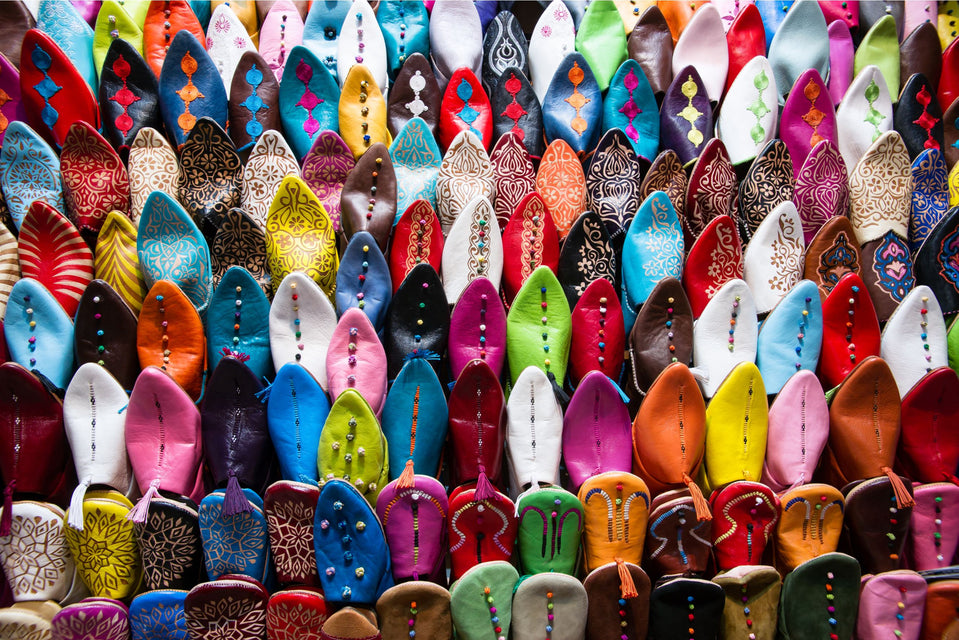A Journey Beyond Shoes
Interviewer: Today, we’re delighted to sit down with Giuseppe Bonfiglio, founder and driving force behind Loungers, a luxury footwear brand that goes beyond creating beautiful shoes. Giuseppe has spent the past 20 years studying at the International School of Self Awareness, combining his entrepreneurial journey with a passion for mindfulness, health, and a commitment to living a life aligned with purpose. Thank you, Giuseppe, for joining us.
Giuseppe Bonfiglio: Thank you! It’s a pleasure to share this journey.
Interviewer: You have such a unique approach to business and life. Can you tell us about the journey that brought you to creating Loungers?
Giuseppe Bonfiglio: Absolutely. I’ve always been captivated by shoes, not just as a fashion statement, but as a foundation for health, comfort, and expression. Over the years, I became fascinated by the effect that well-designed, comfortable shoes could have on people’s well-being. My personal journey in self-awareness and meditation showed me that there’s more to life than business success alone; I wanted my work to benefit others in a deeper way. Shoes, quite literally, are how we connect with the earth. If I could create shoes that feel like an extension of oneself, that offer both comfort and alignment, I knew I would be sharing something meaningful with the world.
Interviewer: That’s beautiful. You mentioned self-awareness and meditation. How have these practices influenced your journey as an entrepreneur?
Giuseppe Bonfiglio: Meditation and self-awareness have been at the heart of my journey. I’ve been a student at the International School of Self Awareness for two decades now, and these practices have grounded me, shaped my perspective, and taught me patience. Meditation isn’t about escape; it’s about understanding oneself deeply and cultivating presence. As an entrepreneur, these qualities are essential. Every decision I make for Loungers comes from a place of purpose, not impulse or ego. Meditation has helped me align my business goals with a mission of well-being and awareness, which goes far beyond selling shoes. It’s about offering something that truly enhances people’s lives.
Interviewer: Can you tell us more about this mission of well-being you aim to promote with Loungers?
Giuseppe Bonfiglio: My mission with Loungers is to elevate how people think about shoes. I want to create footwear that isn’t just aesthetically pleasing but also supports the body’s health. Every pair is designed to support the natural movement of the foot, enhancing posture and promoting comfort. Walking well is about so much more than just getting from one place to another, it’s about health, alignment, and being grounded. If I can help people walk through their lives with more comfort and mindfulness, I believe they will carry that sense of well-being into every step they take.
Interviewer: That’s such a holistic view. Was there a specific moment when you realized you wanted to share this vision with the world?
Giuseppe Bonfiglio: Yes, there was a very defining moment. During a meditation session, I realized that my work could be an extension of my personal beliefs, my passion for self-awareness, mindfulness, and health. I understood that the business could be a medium through which life expresses something greater. That’s when I knew Loungers had to be more than just a brand. It needed to embody a philosophy, a way of walking through life—literally and figuratively. I wanted Loungers to reflect what life was manifesting through me: a dedication to quality, mindfulness, and the healthy impact that good shoes can have on the body.
Interviewer: Your vision truly resonates on so many levels. How do you see the relationship between physical health and footwear?
Giuseppe Bonfiglio: It’s all connected. Our feet are our foundation, and yet we often overlook how shoes affect our overall health. Shoes that don’t fit well or don’t offer support can lead to posture issues, back pain, even fatigue. By creating shoes that are structured and functional, I’m not only helping people walk well but also supporting their overall health. Just as our mind and body are connected, so are our feet to our entire physical experience. Walking is such a natural, almost meditative act. When we walk with good alignment, it creates a sense of ease and flow throughout the whole body.
Interviewer: Loungers has also developed a unique hybrid footwear concept, designed to be worn both indoors and outdoors. Could you tell us more about this innovation?
Giuseppe Bonfiglio: Absolutely. The idea behind our hybrid footwear is to bridge the gap between comfort and versatility. Most of us lead lives where we move fluidly between indoor and outdoor spaces, and traditional footwear doesn’t always cater to that. With Loungers, I wanted to create shoes that offer the comfort of indoor wear with the durability and style needed for the outdoors. Each pair is crafted with high-quality materials that provide excellent support and protection but with a lightweight, flexible design that feels as comfortable as a slipper. Our hybrid concept is really about enhancing the modern lifestyle, allowing people to transition effortlessly from home to work, to social settings, without needing to change shoes. It also aligns with our vision of mindfulness and simplicity: fewer, better items that work well across different spaces and occasions. This approach not only offers convenience but also promotes a more sustainable mindset, where one pair of versatile shoes can replace the need for multiple pairs.
Interviewer: What does the future hold for Loungers and your vision?
Giuseppe Bonfiglio: I see Loungers growing as a brand that people trust not only for style but also for the positive impact it has on their well-being. We’re constantly researching and innovating, focusing on sustainable materials and cutting-edge designs that support health. Beyond expanding the product line, I want Loungers to be a catalyst for more awareness about how even simple daily habits like the shoes we wear, can elevate our overall health and consciousness. I would love to see a world where people view shoes as not just fashion, but a step toward self-care and mindful living.
Interviewer: I understand Loungers also includes a unique gift for customers with each purchase a book called OMM (One Minute Meditation). Could you share the story behind this?
Giuseppe Bonfiglio: Of course. The OMM (One Minute Meditation) book is very close to my heart. It’s a small, accessible guide that introduces people to meditation, even if they’re new to the practice. We include it with every pair of Loungers because we want our customers to experience the benefits of mindfulness in a simple, approachable way. Life can be hectic, and I have found that just one minute of meditation can make a world of difference, it grounds you, reduces stress, and helps you reconnect with yourself. By gifting this book, I hope to inspire people to pause, breathe, and be present. The idea is to complement the physical comfort of our shoes with a mental practice that adds balance and peace to their daily lives.
Interviewer: It is wonderful to see how you have integrated sustainability into the company as well. Can you tell us about the impact of your partnerships with Beyond Trees and OneTribe?
Giuseppe Bonfiglio: Sustainability is a core principle for us at Loungers. We believe that every business has a responsibility to contribute positively to the planet. For every pair of shoes sold, we plant one tree through our partnership currently with Beyond Trees. Trees are critical to maintaining the earth’s balance, from absorbing CO2 to supporting biodiversity, so each pair of shoes we create leaves a positive footprint. Additionally, through our partnership with OneTribe, we protect 1 existing trees in the rain forest for every purchase. The rain forest is home to countless species and indigenous communities, and its preservation is essential for global ecological health. These initiatives mean a lot to us, as they allow us to give back and ensure that Loungers is part of a larger, positive environmental story.
Interviewer: You also have a fascinating project around up-cycling and sustainability. Can you tell us about the Kintsugi Project?
Giuseppe Bonfiglio: The Kintsugi Project is inspired by the Japanese art of Kintsugi, where broken pottery is repaired with gold, highlighting its cracks as a unique part of its history. This philosophy of embracing imperfections aligns perfectly with our values. Through the Kintsugi Project, we encourage customers to return their worn-out Loungers so we can up-cycle and give them a new life. Some of these shoes will be refurbished and resold, while others are creatively transformed into new pieces. It’s our way of celebrating sustainability and craftsmanship, honoring each pair’s journey. This project helps reduce waste, and it adds to our commitment to circularity, showing that every product has value and can be renewed rather than discarded.
Interviewer: Finally, any advice for others who want to bring mindfulness and purpose into their entrepreneurial journeys?
Giuseppe Bonfiglio: I would say to start with the inner work first. Understand who you are and what you want to bring into the world. Meditation has been instrumental for me it’s helped me align with my values and see beyond business goals alone. When your work is in harmony with your deeper purpose, it becomes a source of joy and fulfilment. Listen to what life wants to manifest through you, an














